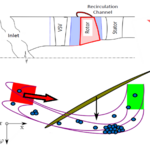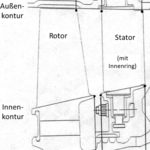Research Projects

In this section you will get an insight into the current research projects of the Chair of Turbomachinery and Flight Propulsion.
IMPROVE

The IMPROVE research project comprises the numerical and experimental investigation of a disruptive novel airfoil design concept for compressor blades.
You can find detailed information here.
Research Project: AKTIVER
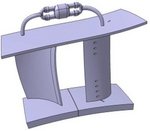
The AKTIVER project (Active Flow control in compressor components of future Aircraft Engines) focuses on the research and design of innovative concepts for flow control in aerodynamically highly loaded intakes and compressors of future aircraft engines.
You can find detailed information here.
Research Project: Turbine preliminary design processes of the future

The preliminary design of turbomachinery is a complex process. Therefore the evalution and revision of the current and development of new mechanical pre-design methods of turbine components are the main tasks of this project.
You can find detailed information here.
Research Project: DRIVER
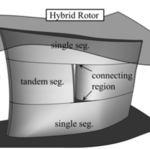
The DRIVER project aims to explore a new design concept for highly loaded axial compressors using tandem airfoils with high flow turning and efficiency, with further new technologies to be developed to influence the flow in the endwall regions in a loss-reducing manner.
You can find detailed information here.
Research Project: Erosion Prediction in Compressors
Particle entrainment in aero-engines is unavoidable and stable operation can be compromised by impurities. The project aims are to improve the understanding of the physical flow behaviour of particle-laden flows.
You can find detailed information here.
Research Project: Optimization of Compressor Stator Arrangements
The sealing between static and rotating components in axial turbomachines in the hub area of compressor stators is usually carried out with the help of an inner shroud or by using cantilevered vanes. The choice of configuration is influenced by aerodynamic, mechanical and economic factors and must therefore be assessed in a multidisciplinary environment.
You can find detailed information here.
Research Project: Robust turbomachinery for flexible use
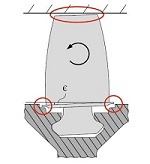
The "RoBoFlex" project aims to investigate the manifestation of "real geometry effects" in the annulus (gaps, steps, edges, blade misalignment) under variable conditions starting from the Aerodynamic Design Pont (ADP). The qualitative and quantitative assessment of these phenomena and their influence on performance is the subject of current research.
You can find detailed information here.
Research Project: Unsteady Tandem Flow
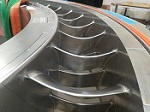
The aviation industry is working on increasing the efficiency of aircraft engines. One way of increasing the stage loading of turbocompressors is to use tandem blades. The aim of the project "Unsteady Tandem Flow" is to numerically and experimentally investigate the flow through tandem blades in a multistage axial compressor, whose dimensionless coefficients are representative for high-pressure compressors of aircraft engines.
You can find detailed information here.
Reseach Project: Numerical calibration of pressure probes
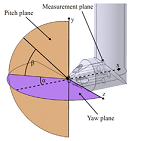
Experimental investigations on innovative blade geometries and flow treatments are carried out at the HSRC axial compressor test rig. As part of the research topic "Numerical calibration of pressure probes", a methodology is to be developed with which pressure probes can be numerically calibrated.
You can find detailed information here.
Reseach Project: SMALL AERO ENGINES – PERFORMANCE AND EMISSIONS USING DROP-IN FUELS

Alternative fuels can be used to achieve a rapid reduction in the climate impact of aviation, In addition to electric aircraft engines or the use of hydrogen as a fuel. In the project, funded by Munich Aerospace e.V., the behavior of a small gas turbine with regard to performance, engine health, and the resulting emissions will be investigated using alternative fuels.
You can find detailed information here.
Active Clearance Control
The project aims are to establish the feasibility of different concepts to influence rotor and casing displacements, so as to keep clerances to a minimum while ensuring safe operation.
You can find detailed information here.
